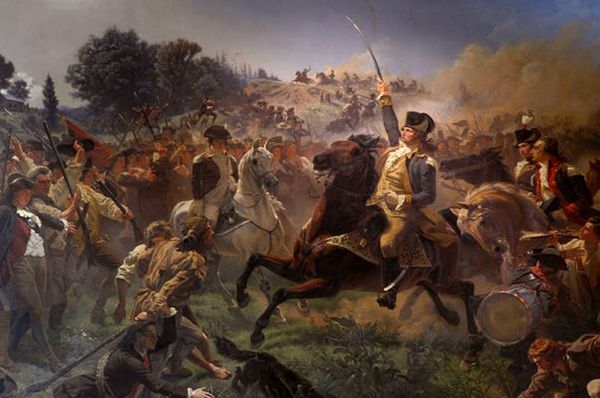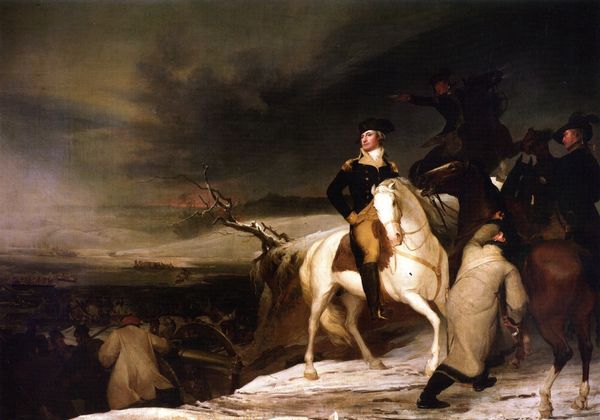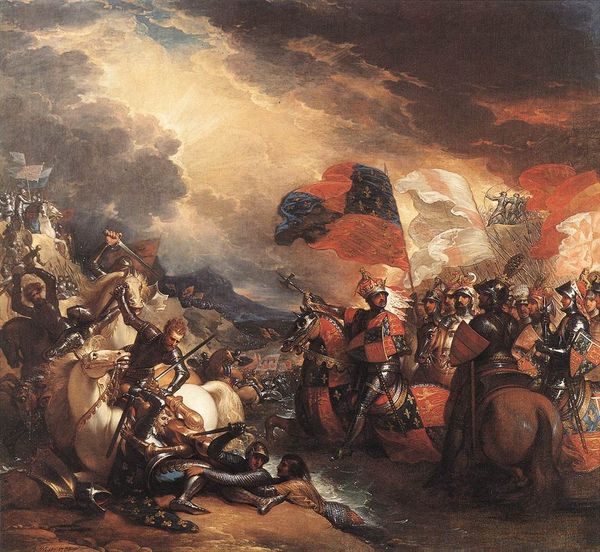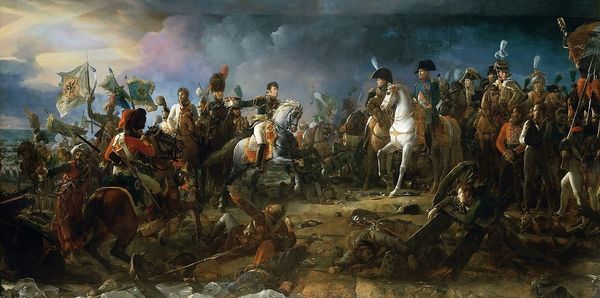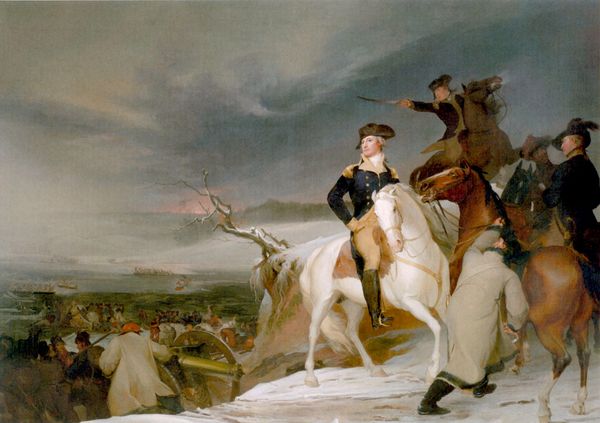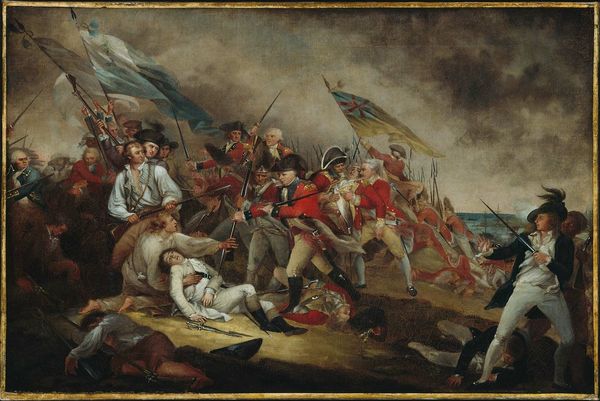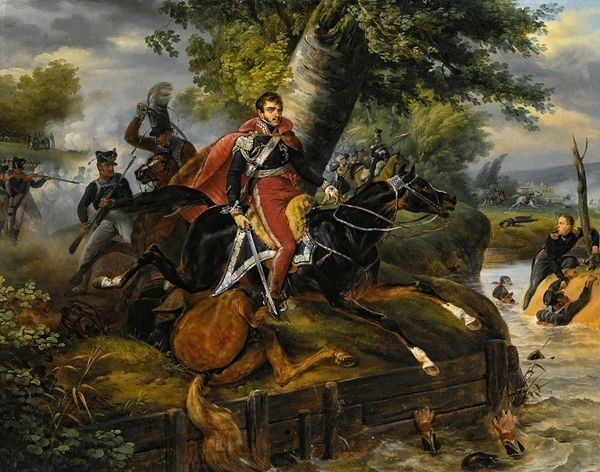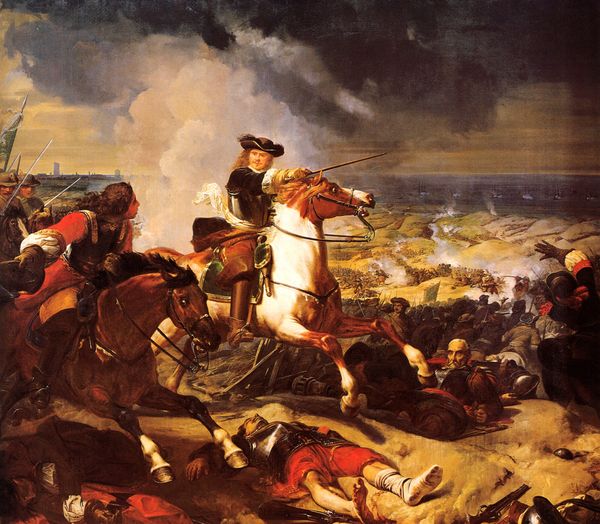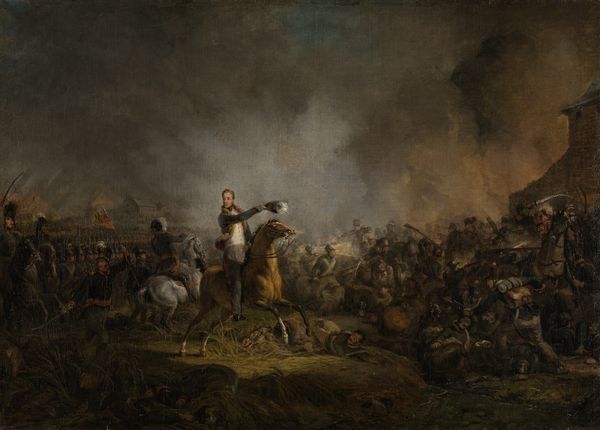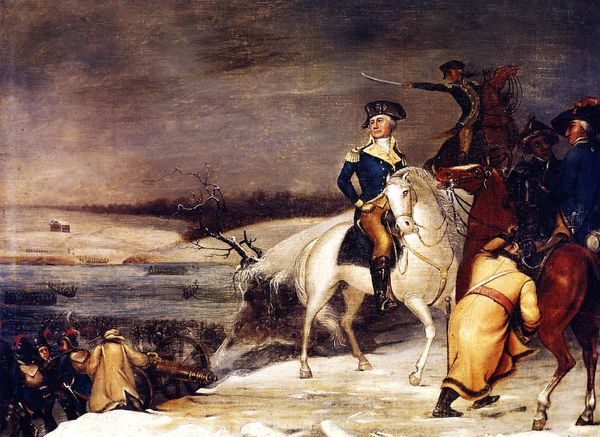
Dimensions: 332 x 530 cm
Copyright: Public domain
Curator: Alright, let's talk about this monumental painting. We are looking at "Batalha do Campo Grande", or "Battle of Campo Grande," created by Pedro Américo in 1871. The artist chose oil paint to depict a moment of great conflict and heroism. Editor: Wow, talk about dramatic! It’s pure chaos, like a storm cloud about to burst. I see all these figures clashing. My eye is immediately drawn to that white horse. It stands out amid the tumult like a beacon. Is it intentional, do you think, this focus point? Curator: Absolutely. The white horse, along with its rider, serves as a focal point, embodying leadership amidst the battle. Américo painted this piece as a potent symbol of Brazilian resistance and military strength during the Paraguayan War. Consider the socio-political backdrop: Brazil needed to solidify its national identity. Editor: True! But it feels romanticized, almost staged, even with all the bodies and firing cannons. Does that have to do with "academic art"? The perfect figures in chaos feels off. Curator: Indeed. Américo merges realism with a flair for the dramatic often seen in academic art. It was commissioned to bolster a sense of national pride through a very specific—and perhaps idealistic—lens. He strategically uses symbolism, lighting, and figure arrangement to convey specific narratives. Editor: Narratives! That's right. It’s propaganda! I get that the battle itself was gritty and probably not filled with chiseled physiques like these, huh? Still, as a visual, I think he created something that demands attention. It tells the viewer "Remember this." Curator: Yes, memory is really at the core of history paintings. These were visual records aimed at cementing particular viewpoints and historical interpretations in the public consciousness. Américo actively participated in defining Brazil's historical memory. Editor: I love that tension, though: How to show what happened AND guide opinion. So, not just ‘look’, but ‘believe’! Thinking of its display back then makes it hit harder, even now. What do you take away after all of this? Curator: It reminds us that art doesn't exist in a vacuum. Works like "Batalha do Campo Grande" are essential for understanding how national identities are crafted and projected through the careful and purposeful manipulation of visual narratives. Editor: For me, beyond the grand political statements, there's an undeniable human drama. Look closer, past the idealized heroics, and it shows me we are all part of stories, told and retold, shaped by perception, bias, and artistic flare. Even if a horse isn’t always a horse.
Comments
No comments
Be the first to comment and join the conversation on the ultimate creative platform.
